Vienna - Saturday April 6, 2019
I began the day with a bike ride.
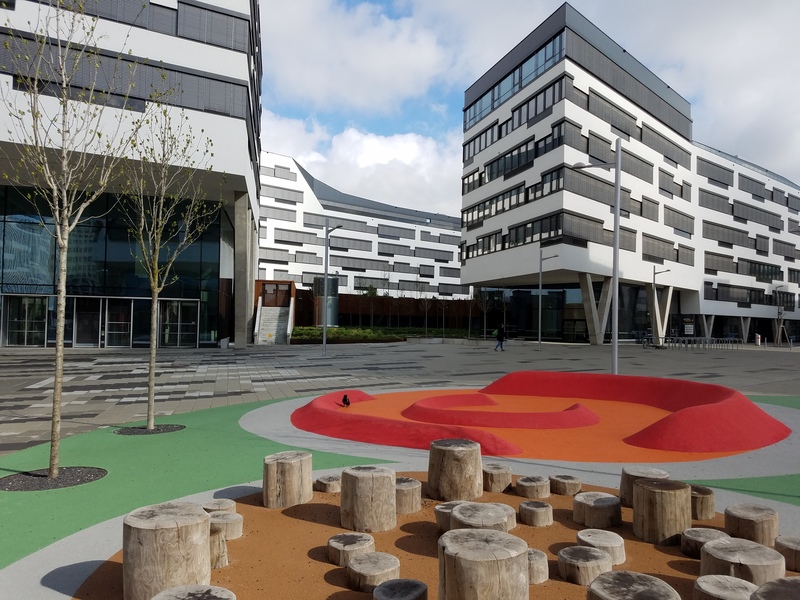
Near my hotel I rode through upon something called Austria Campus. It appears to be an office park. Very modern, new and clean. Everything in this photo is so clean and new that it looks like a computer-generated arcitectural rendering, so much so that it freaks me out a little. The bird and the person walking in the background remind me that it is a real place.
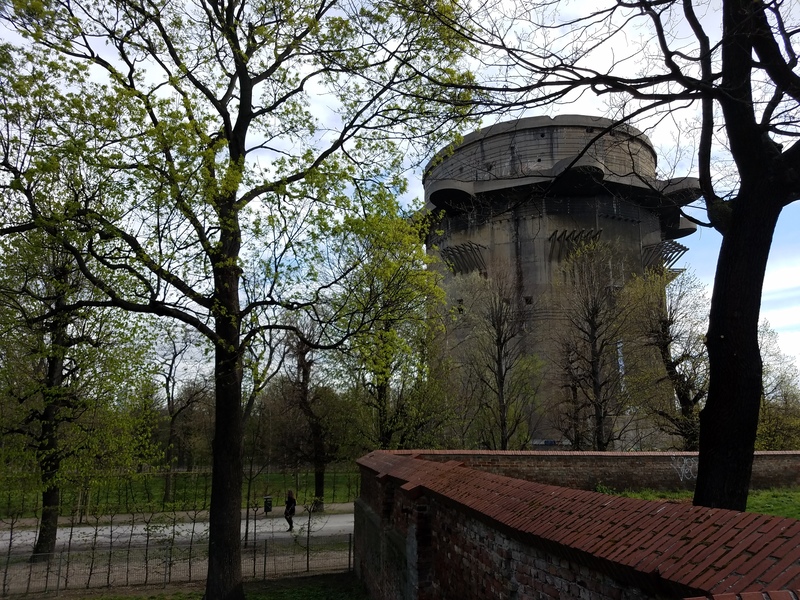
My hotel is in district 2. My ride to the old part of town (district 1) crossed the width of district 2. One park I passed was walled, apparently a former fortification.
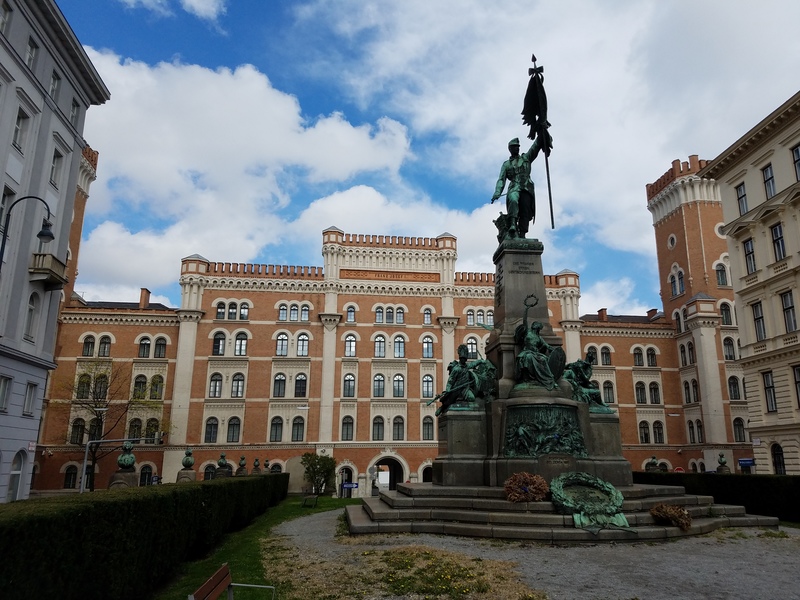
Very quickly after getting into Wien, I stumbled across a war memorial. Memorials to the power of the Habsburgs were common. The building behind the statue says Franz Joseph I, one of the last emperors of Austria. A few minutes later I came upon the Hoffburg palace, where he lived. He'll show up again tomorrow.

On the way home I noticed an anti fascist sticker. The sicker tells us that fascists secretly like the meat that is commonly found in kabobs.
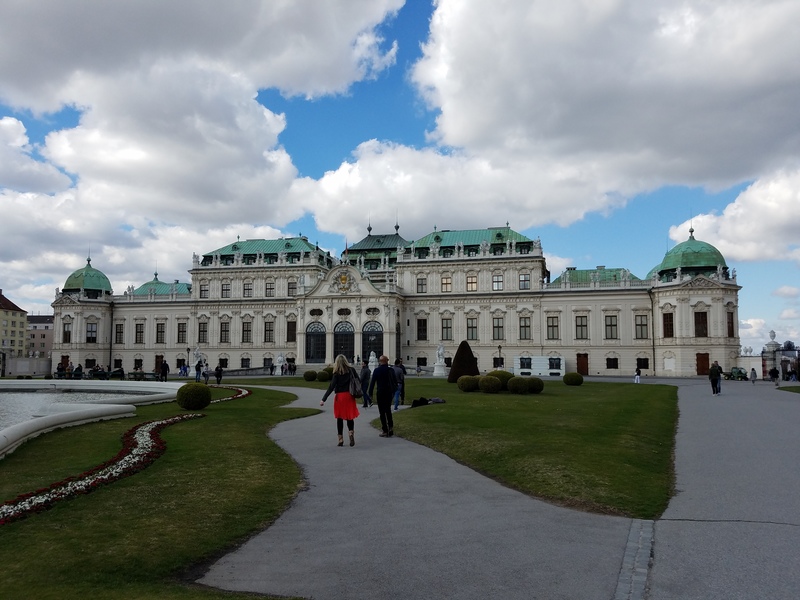
Back on the subway, I visited Belvedere Palace for the afternoon. The Belvedere was planned and built by a hero of the Habsburg empire. In 1683, Prince Eugene led the Austrian troops against the Ottomans in a surprise attack, ending the last Ottoman siege of Vienna. According to a tour guide, the Ottomans abandoned their encampments, leaving behind coffee beans. Vienna was forever changed. This is the upper palace.
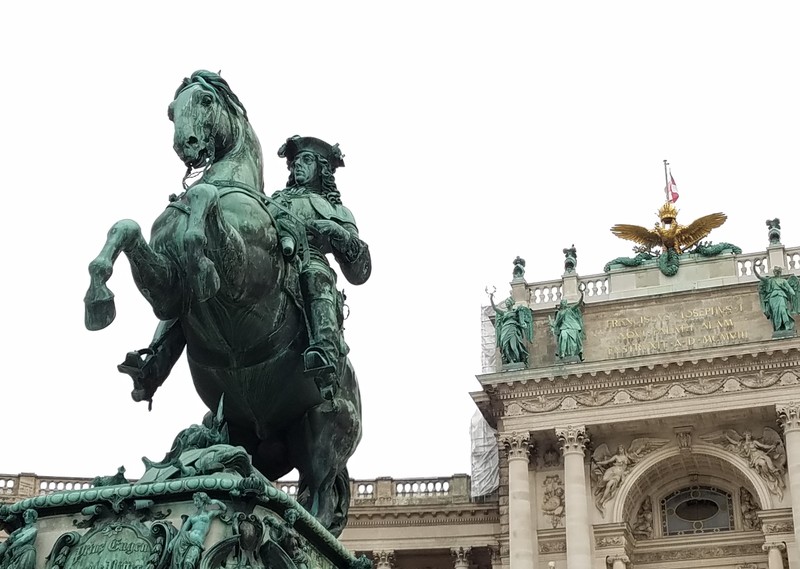
I later took this photo in front of one of the facades of the Hoffburg palace, the palace of the Habsburgs near the Vienna city center. This large statue shows Prince Eugene, hero of the empire, capturer of coffee.
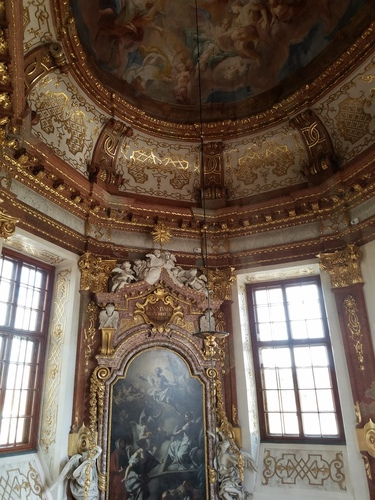
The palace is palatial. It is now an art museum. More about Viennese art later.
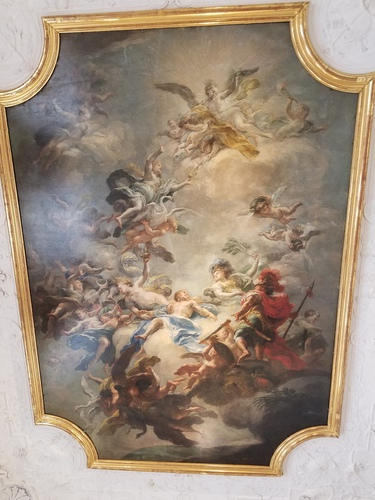
This painting (taken Saturday 4/13) shows Prince Eugene being glorified in heaven. Prince Eugene was a big fan of Prince Eugene.
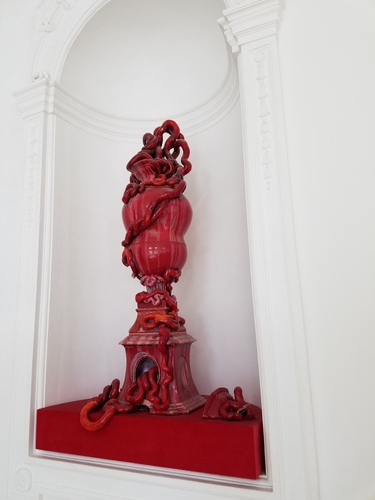
Normally this spot in the palace would contain a magnificent urn or other art object. The Three Gorgons, 2013, by Gerold Tusch, parodies this idea. Anogther representation of three gorgons will show up later, in the Klimt Beethoven Frieze. Probably a coincidence.
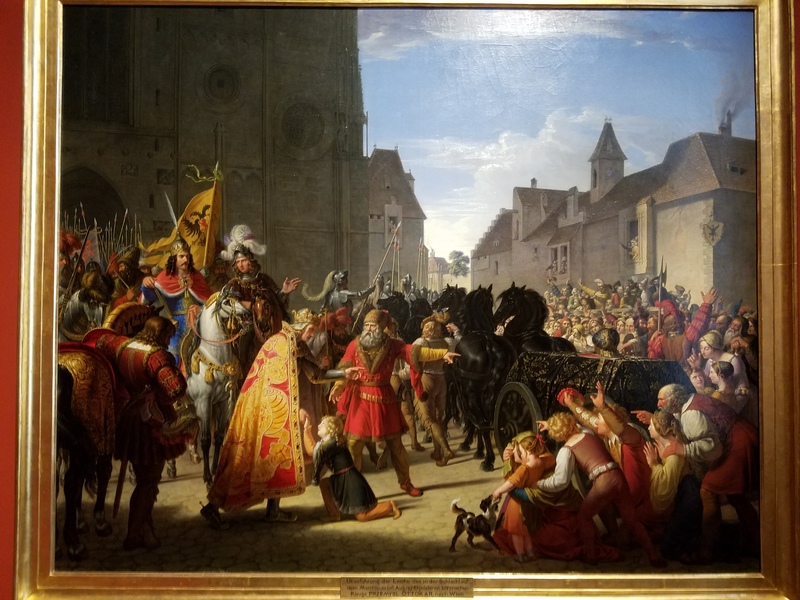
This is an example of art From the palace in its heyday. From 1826,by Anton Petter, it glorifies one of the Habsburgs.
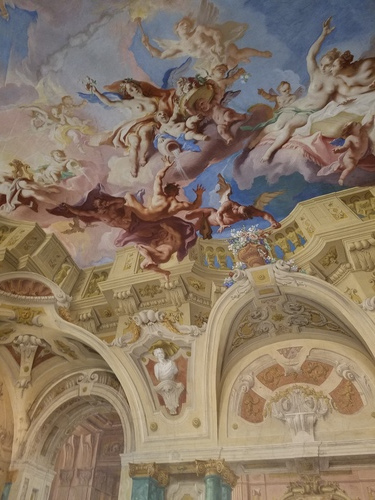
On the lower floor, a chapel room.
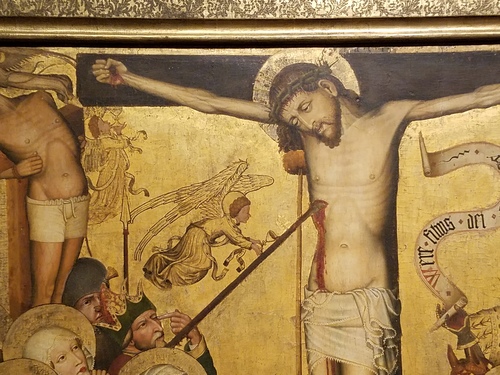
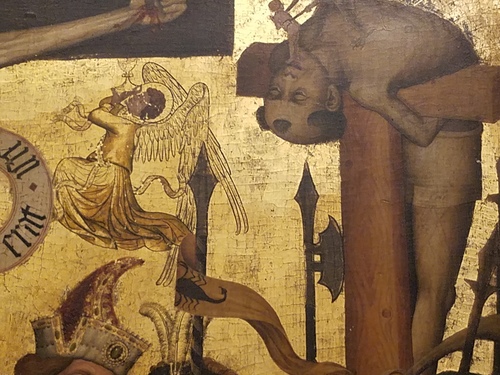
Artifacts from the chapel were on display, including another example of a gold religious icon painting. Two details From the painting are shown.
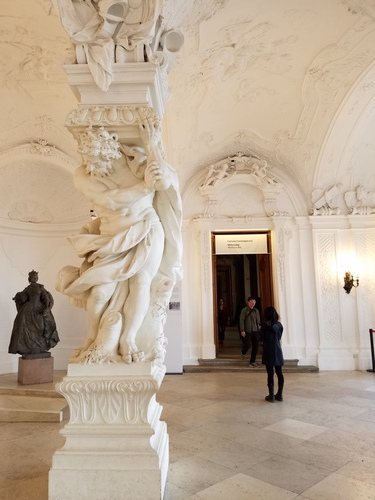
The Habsburgs seemed to like this strong bearded guy, here holding up the palace. We will see him again later.
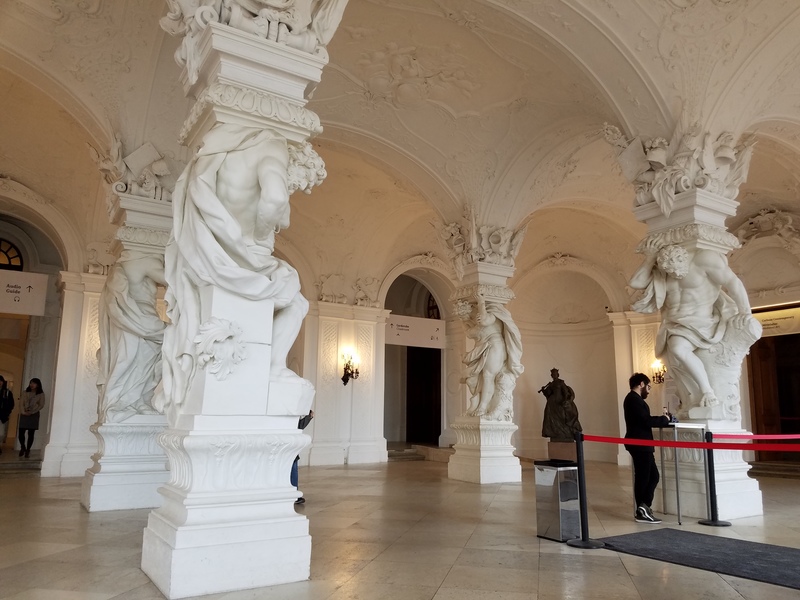
Palace support.
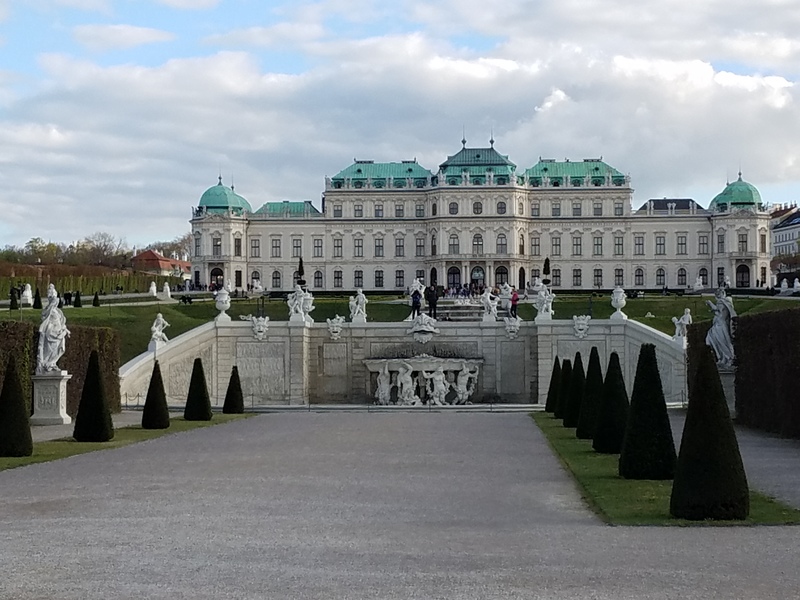
Palace grounds are arranged to glorify art, not nature.
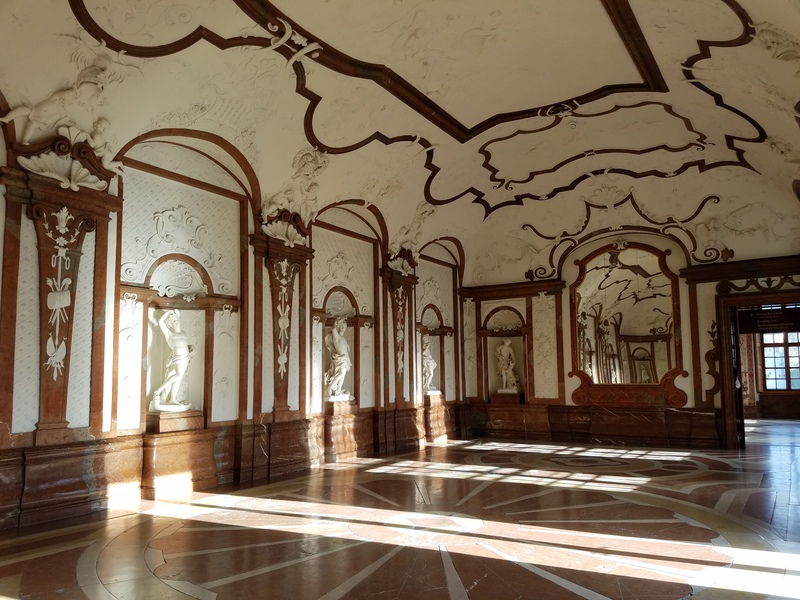
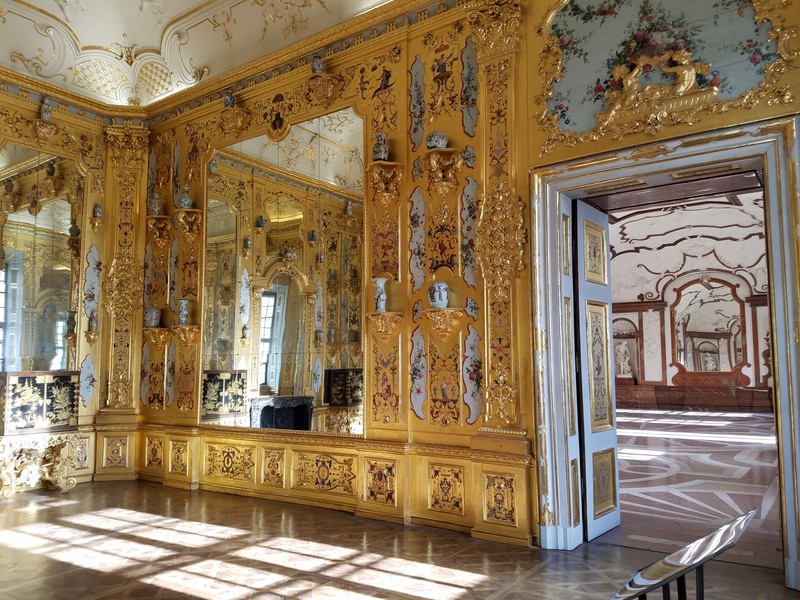
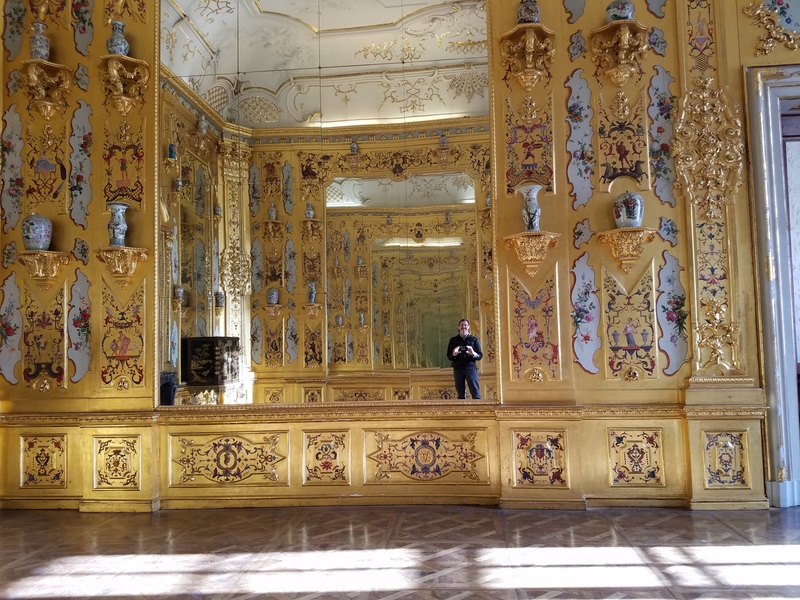
Fancy rooms in the Belvedere lower palace.
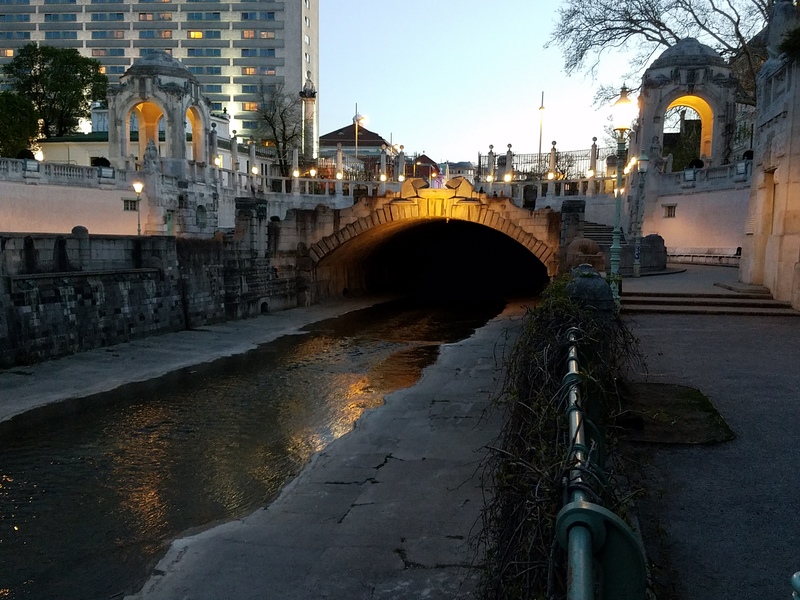
On the way home, I walked through Stadtpark, along a canal.
Back to
Jonathan's Page
Vienna 06 April 2019 / Jonathan Krall / revised January 2020

















